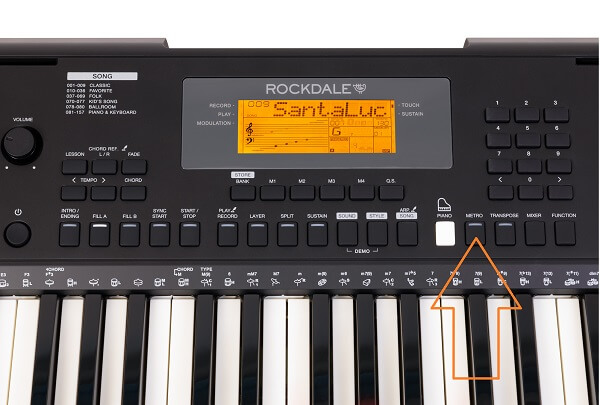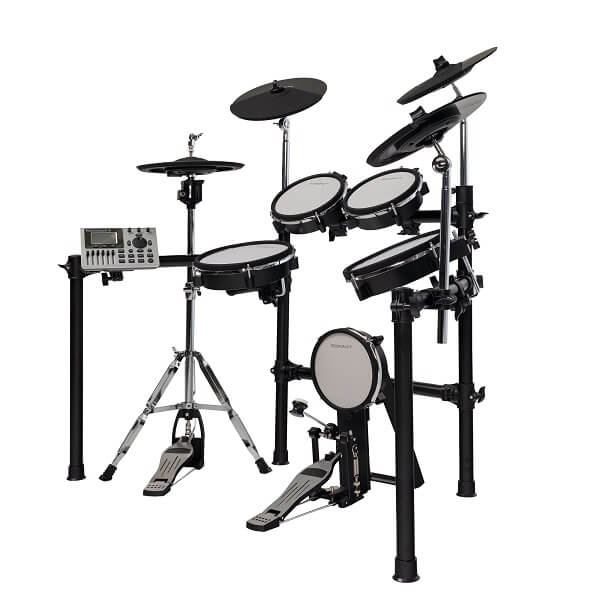What is a metronome?
A metronome is a device designed to measure time in music and to help musicians maintain a constant tempo or rhythm. It produces regular auditory signals or has an LED indicator that flashes according to the set tempo. This allows musicians to play at the desired tempo and follow a given rhythm without deviations.
How did the metronome come about?
The metronome was invented in the early 19th century by the German inventor Johann Nepomuk Maelzel in 1815. The idea of the metronome emerged as a means to ensure accuracy in music by providing a stable rhythmic indicator. Initially, the metronome was a mechanical device consisting of a pendulum that could be set to various tempos and a toothed wheel that determined the frequency of beats.
Maelzel’s invention revolutionized musical practice by providing musicians with a stable and precise rhythm during performance. Gradually, the metronome became a standard tool for musical practice and professional performance.
Why is a metronome needed?
The metronome is not just a device for practice; it becomes an indispensable tool in musical creativity and performance. Here are several key reasons why the metronome is an essential accessory for musicians:
1. Maintaining a stable tempo: The metronome helps musicians maintain a consistent tempo throughout the performance, which is particularly important in music where rhythm plays a crucial role.
2. Improving technique: Regular practice with the metronome helps improve playing technique, as it teaches the musician to play accurately and consistently.
3. Developing musical ear: Listening to the metronome helps to develop a sense of rhythm and timing, which is beneficial for both individual and group music-making.
4. Rehearsal training: The metronome assists rehearsing musicians in synchronizing their playing and creating a cohesive sound.
How to use a metronome?
Using a metronome is quite simple. The musician sets the desired tempo on the device, and it begins to emit auditory or visual signals at a specified interval corresponding to the selected tempo. The musician plays or practices in unison with these signals, aiming to synchronize their playing with the metronome’s rhythm.
Over time, metronomes have become electronic, increasing their accuracy and functionality. Today, metronomes are available in various forms, from mechanical to software applications for smartphones and computers, and they continue to play a crucial role in music education and performance.
Built-in metronome
A built-in metronome is a feature provided by some musical instruments as well as audio and music applications. This metronome is typically integrated into the device, providing the musician with the ability to use the metronome directly during play or practice, without the need to purchase a separate device.
One of the most common examples of a built-in metronome is found in electronic keyboard instruments such as digital pianos or synthesizers. They usually have built-in metronomes that can be set to various tempos and rhythms to help the musician maintain the correct tempo during play.

ROCKDALE synthesizer’s built-in metronome function.
Most modern electronic drum kits come with a built-in metronome. This is one of the primary functions provided by electronic drum manufacturers. The built-in metronome helps drummers maintain a stable tempo and rhythm during play, which is a key aspect for developing technique, precision, and musical discipline.
Built-in metronomes on electronic drum kits often have various settings, such as tempo selection, rhythm, signal volume, etc. Some drum modules also provide the ability to record and save custom rhythm patterns or templates for convenience during practice.
This integrated metronome on electronic drum kits sets the standard for rhythmic accuracy and provides a convenient tool for practice and performance for both beginners and experienced drummers.

SM-104 percussion module provides a built-in metronome for ROCKDALE Thunder Mesh PRO 2 drum kit.
Additionally, built-in metronomes can be found in digital audio players, music applications for smartphones and tablets, as well as some audio recorders. These metronomes usually provide various settings for tempo, tactile and audio signals, and other parameters to meet the musician’s needs.
A built-in metronome is a convenient and accessible way for musicians to maintain the correct rhythm during play and practice, as well as to develop their sense of timing and rhythm.
Conclusion
The metronome is an indispensable tool for any musician, regardless of their level of training or musical style. It helps improve technique, develop a sense of rhythm and timing, and provides stability in performance. Don’t forget to incorporate the metronome into your practice—it’s a simple device that can make a big difference in your musical performance.